Welcome to the fascinating world of additive sculpture, where artistic expression takes shape through the layering and building of materials. Additive sculpture is a dynamic shape of inventive introduction that involves the incremental addition of elements to construct a three-dimensional painting. This manual will explore the various geographical regions of additive sculpture, unveiling the diverse strategies and patterns that artists rent to deliver their visions to existence.
From the traditional approach of carving and molding to contemporary technologies like three-D Printing, additive sculpture spans a spectrum of procedures that cater to the ever-evolving panorama of artistic innovation. Whether it's the classical beauty of clay modeling or the futuristic precision of digital fabrication, every kind of additive sculpture holds its particular allure and demanding situations. Join us on a journey via the intricacies of additive sculpture, in which imagination meets craftsmanship in a symphony of layers and textures.
What is Additive Sculpture?
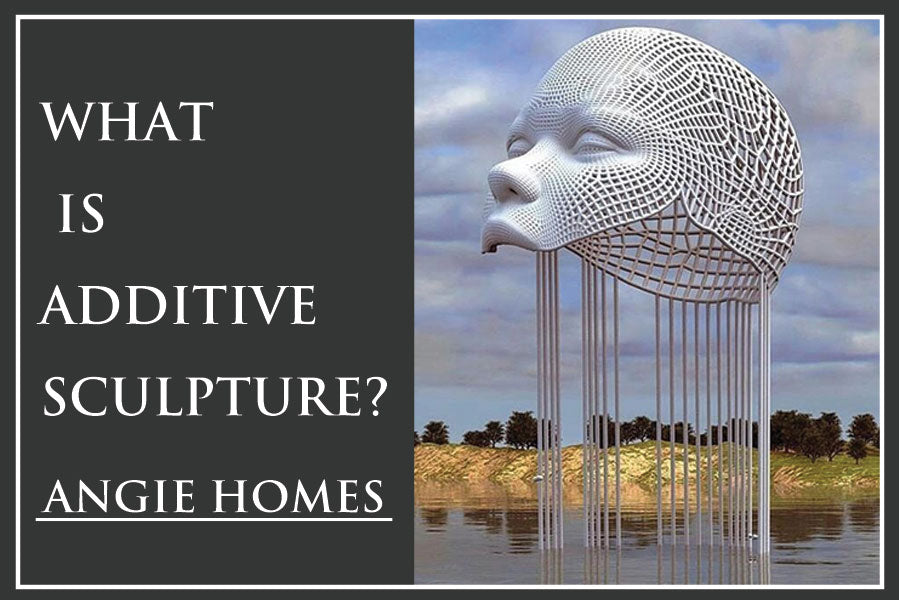
Additive sculpture is an artistic process that entails constructing materials to create 3-dimensional paintings. In the assessment of subtractive sculpture, where fabric is carved or eliminated from a larger mass, additive sculpture specializes in adding factors together. This method lets in for a dynamic exploration of form, texture, and composition. Artists running in additive sculpture rent numerous techniques and gear, starting from conventional hand-constructing with clay to modern-day tactics, including three-D printing and digital layout software programs.
The conventional handcrafting aspect involves layering and molding materials like clay, paper, or maybe cloth to progressively form the desired shape. This tactile technique creates a direct connection between the artist and the medium, fostering a hands-on, intimate creative procedure. On the opposite hand, cutting-edge additive sculpture leverages technology to attain precision and complexity. Techniques like three-D Printing enable artists to bring difficult digital designs into the bodily realm, increasing the possibilities of shape and structure.
Additive sculpture is a huge and evolving area that comprises a spectrum of styles, from classical to avant-garde. It now not only celebrates the rich history of sculptural traditions but also embraces the modern equipment that pushes the limits of inventive expression, making it a charming and ever-increasing avenue for innovative exploration.
Types of Additive Sculpture
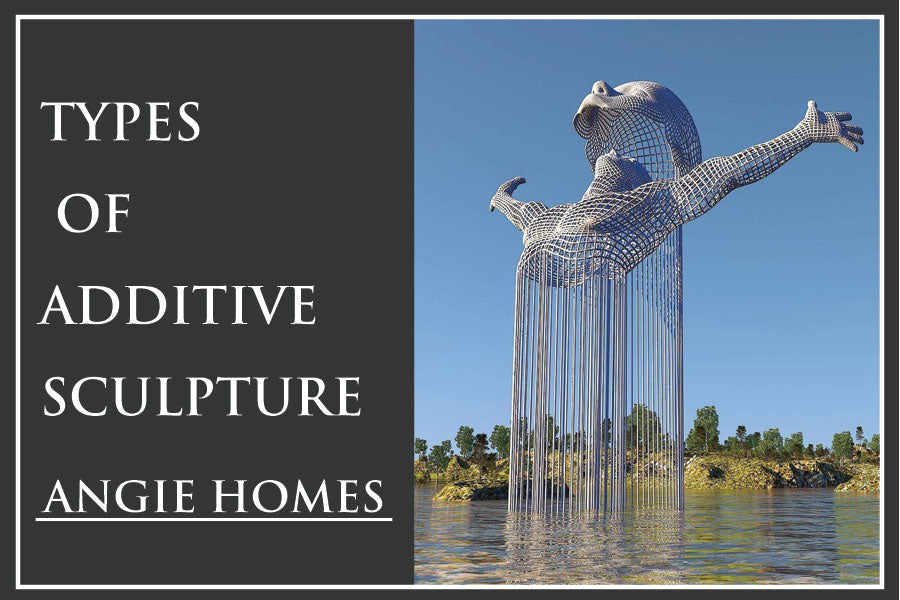
1. Clay Modeling:
One of the oldest sorts of additive sculpture, clay modeling, entails manipulating pliable clay to build up a sculpture. Artists form and mildew the material through the hand, taking into consideration an intimate connection between the artist and the work. The flexibility of clay helps the introduction of both small, specific portions and larger, extra-robust sculptures.
2. 3-d Printing:
In the area of modern-day additive sculpture, 3-D printing has emerged as a modern method. Artists can digitally design complicated forms and then use three-D printers to layer materials together with plastic or resin, progressively constructing the final sculpture. This approach allows for remarkable precision and complexity in design.
3. Assemblage:
Additive sculpture through assemblage involves combining numerous pre-present items or substances to shape a brand-new composition. Artists strategically set up and affix disparate factors to create a cohesive and regularly symbolic sculpture. This approach encourages recycling and repurposing, emphasizing creativity through the manipulation of determined items.
4. Paper Mache:
Paper mache is a flexible additive sculpture method that uses a combination of paper and adhesive. Layers of paper are added and molded onto an armature to form the favored shape. Once dried, the sculpture may be painted and completed. This accessible method is regularly utilized in academic settings and for growing lightweight, transient portions.
5. Welding and Metal Fabrication:
For the ones working with metals, welding, and steel fabrication offer additive sculptural possibilities. Artists weld collectively person steel additives, layering and shaping them to create problematic and regularly enormous sculptures. This method is properly ideal for both indoor and outdoor installations due to the durability of metal substances.
The Process of Additive Sculpture
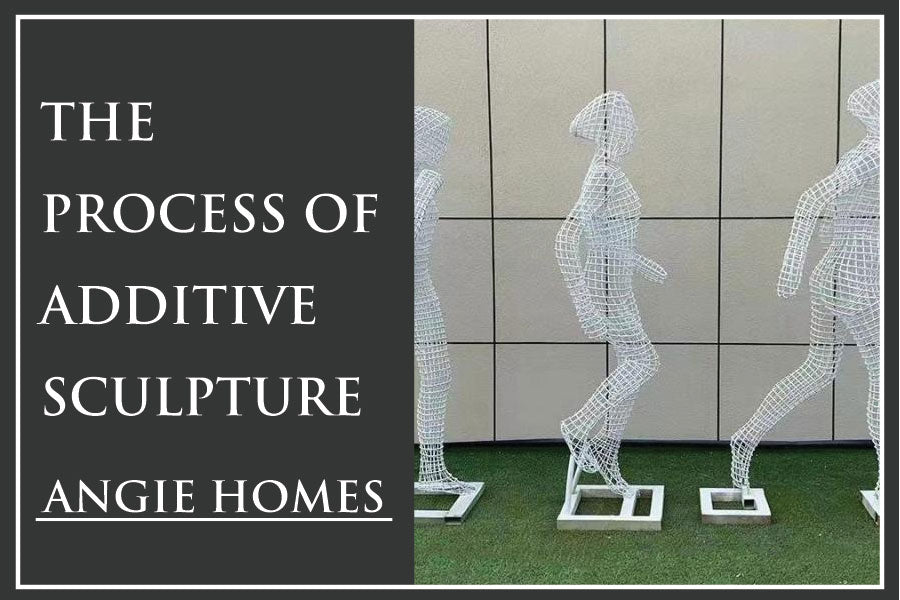
-
Conceptualization:
The system of additive sculpture starts with a conceptualization section in which the artist envisions the form, structure, and subject matter of the Additive Sculpture. This stage may also involve sketching, digital design, or a mental visualization that courses the following steps.
-
Material Selection:
Choosing the best substances is a vital element of additive sculpture. Depending on the artist's vision, substances like clay, paper, steel, or artificial polymers may be selected. Each material brings unique houses that impact the tactile and visible characteristics of the very last piece.
-
Layering and Building:
The center of additive sculpture entails the sluggish layering and construction of substances. Whether hand-modeling with clay, assembling located gadgets, or 3D Printing, the artist incrementally adds factors to assemble the final form. This section needs a balance of creativity, precision, and endurance.
-
Finishing Touches:
The completing touches complete the additive sculpture procedure. This entails any final modifications, floor remedies, and the application of colors or coatings. Artists can also pick to leave the sculpture in its raw kingdom or follow finishes to enhance its visual enchantment and durability.
-
Display or Installation:
The final step entails determining how the sculpture could be supplied. Whether exhibited in the interior or established as a public art piece, the display contributes to the overall effect and interpretation of the additive sculpture, closing the innovative loop of the inventive system.
Additive Sculpture Materials

-
Clay:
Clay is a traditional and flexible material in Additive Sculpture. Its malleability allows artists at hand to construct intricate bureaucracy, and it can be fired to create enduring ceramic sculptures. The tactile nature of clay fosters a direct connection between the artist and the medium, supplying a palms-on technique to sculpting.
-
Paper:
The paper serves as a lightweight and accessible fabric for additive sculpture, especially in techniques like paper mache. Layering paper with adhesive creates a robust but adaptable structure. Artists can mold paper into numerous shapes, making it appropriate for both small-scale creations and massive installations.
-
Metal:
Metals, consisting of metal or aluminum, are hired in additive sculpture via welding and metal fabrication. Welding allows artists to join steel additives, layering and shaping them to assemble strong and often enormous sculptures. The sturdiness of steel makes it suitable for outside installations.
-
Plaster:
Plaster is regularly used in additive sculpture for developing molds or casts. It can be layered to shape complicated information and textures. Additionally, plaster casts serve as a means to replicate unique sculptures, preserving the artist's paintings and allowing for mass production if preferred.
-
Polymers and Resins:
Modern additive sculptors regularly make use of synthetic materials like polymers and resins, especially in 3D Printing. These substances can be layered to create precise and complex forms, offering a high degree of element and structural integrity. The versatility of polymers allows for a huge variety of innovative possibilities.
Additive Sculpture in Modern Art

-
Digital Technologies:
In modern artwork, Additive Sculpture has embraced digital technology, with 3-D Printing at the vanguard. Artists make use of computer-aided layout (CAD) software to create intricate virtual models, which are then translated into bodily form via layering materials like plastic or resin. This fusion of technology and art has opened new dimensions for creativity, allowing artists to discover complex structures and geometries.
-
Hybrid Approaches:
Many modern-day artists appoint hybrid approaches that integrate conventional additive strategies with virtual gear. For instance, a sculptor may also handcraft a preliminary version, after which 3D scanning and Printing are used to duplicate and alter the work. This synthesis of conventional craftsmanship and cutting-edge era exemplifies the dynamic nature of cutting-edge additive sculpture.
-
Environmental Consciousness:
In reaction to environmental worries, current additive sculptors frequently embrace sustainable materials and practices. Recycled or upcycled materials end up essential to sculptures, reflecting an eco-conscious approach. This now not only addresses environmental problems but additionally adds layers of that means to the paintings, engaging with present-day societal dialogues.
-
Exploration of Scale:
The modern additive sculpture has extended past conventional size barriers. Artists now discover each miniature and enormous scale. 3-D Printing allows for complicated details in smaller works, even as the capability to collect big additives permits the introduction of massive sculptures, transforming public spaces with avant-garde installations.
-
Conceptual and Abstract Themes:
Contemporary Additive Sculpture regularly delves into conceptual and abstract themes. Artists use additive strategies to convey thoughts and feelings, breaking away from representational forms. This shift toward abstraction lets in for a more numerous and nuanced exploration of inventive concepts, pushing the boundaries of conventional sculptural norms.
Common Additive Sculpture Techniques and Examples
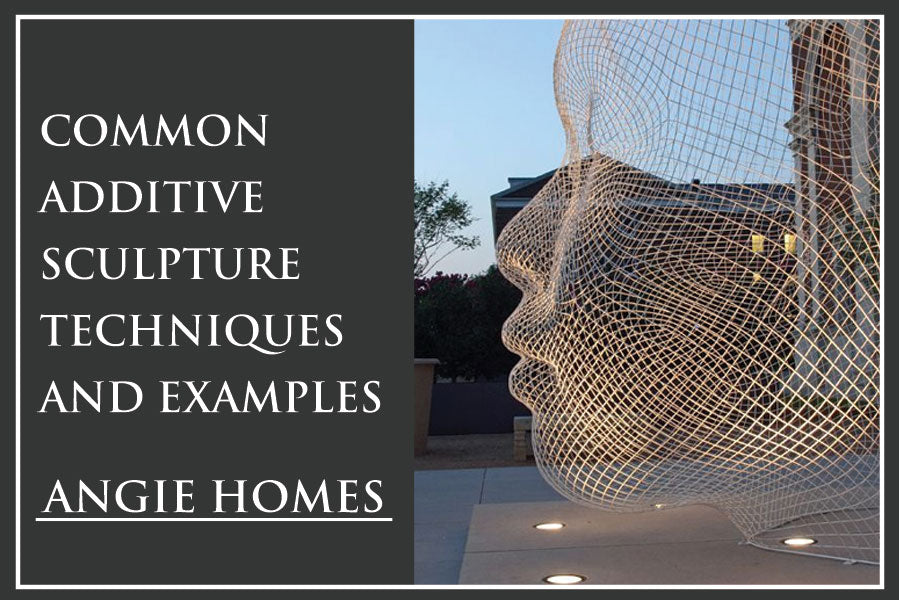
-
Hand-Building with Clay:
A classic approach entails shaping and molding pliable clay by hand to accumulate a sculpture. Artists like Auguste Rodin exemplify this method, as visible in his iconic work "The Thinker," showcasing the expressive opportunities of handmade clay.
-
Assemblage:
Assemblage includes combining diverse gadgets or materials to create a sculpture. Artists like Louise Nevelson are known for their use of assemblage, transforming disparate factors into cohesive and frequently symbolic compositions, as visible in Nevelson's work "Sky Cathedral."
-
Paper Mache:
Paper mache utilizes layers of paper and adhesive to create a sculpture. Claes Oldenburg, known for his huge soft sculptures, regularly hired paper mache to create large-scale, whimsical replicas of ordinary objects like typewriters and hamburgers.
-
Welding and Metal Fabrication:
This method entails welding together steel additives to construct a sculpture. Alexander Calder is an outstanding discern in this realm, pioneering kinetic sculpture. His "Mobiles" showcase elaborate metal elements assembled to create dynamic, moving sculptures.
-
3-D Printing:
A modern-day approach involves digitally designing a version and the usage of three-D Printing to layer materials like plastic or resin. Contemporary artist Bathsheba Grossman utilizes 3D Printing to create intricate geometric sculptures, pushing the limits of precision and shape in additive sculpture.
Buy Online All Types Of Sculptures From Angie Homes At The Best Price
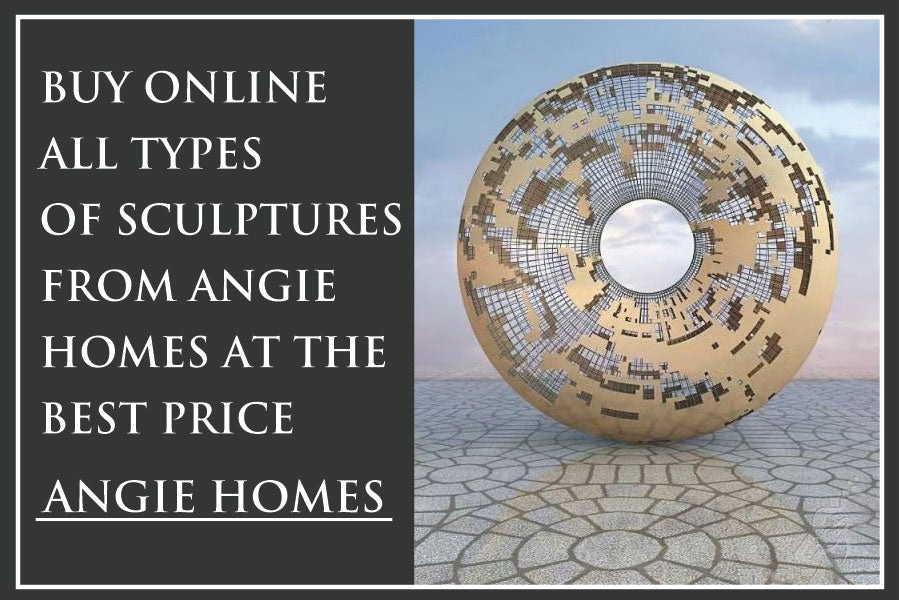
Visit Angie Homes online to explore a numerous series of sculptures catering to diverse, inventive tastes. Whether you recognize traditional homemade clay sculptures, avant-garde steel creations, or contemporary three-D published masterpieces, Angie Homes gives a wide variety to fit your choices. Our platform ensures an unbroken online buying reveal, presenting detailed product descriptions and extremely good snapshots to help you make knowledgeable picks. With competitive costs and steady payment options, obtaining particular and beautiful sculptures for your property or artwork series has by no means been easier. Enhance your space with the splendor of sculptural artwork – store at Angie Homes nowadays!
Conclusion
In conclusion, additive sculpture stands as a dynamic and flexible realm where creative expression converges with modern-day technology and conventional craftsmanship. The various range of tools, from sculpting implements to three-D printers, empowers artists to discover their creativity in myriad ways. Not limited to manual strategies, additive sculpture embraces the marriage of homemade artistry and advanced methodologies, exemplifying the evolution of creative practices.
Its ability to create complicated, small-scale portions and expansive installations underscores its adaptability. The time invested in crafting additive sculptures varies extensively, reflecting the dimensions and intricacy of the expected paintings. As we navigate this captivating fusion of creativeness and materiality, additive sculpture invites us to witness the seamless synthesis of tradition and innovation, unlocking new dimensions within the world of 3-dimensional artistic expression.
Related Posts:
Types of Sculptures: A Comprehensive Exploration
Unveiling the Dynamics of Kinetic Sculpture
Exploring the World of Sculpture: A Comprehensive Guide
Exploring the World of Sculpture: A Comprehensive Guide
A Guide to the Different Types of Sculptures and Statues
FAQ's
Q. What are some common tools utilized in additive sculpture?
Ans: Common tools in additive sculpture encompass a range, together with sculpting knives, chisels, modeling clay, 3D printers, and digital layout software. This equipment permits artists to govern substances in diverse methods, fostering creativity and innovation in a sculpting manner.
Q. Is additive sculpture constantly done by hand?
Ans: No, additive sculpture isn't confined to manual strategies. While hand-constructing with clay is a traditional technique, superior technologies like 3-D printing and CNC machining are also fundamental to this art shape.
Q. Can additive sculpture be used to create big sculptures?
Ans: Absolutely, additive sculpture is remarkably versatile and can be employed to craft sculptures of various sizes. Techniques along with three-D Printing and the assembly of a couple of components enable the creation of small, elaborate pieces and big-scale installations.
